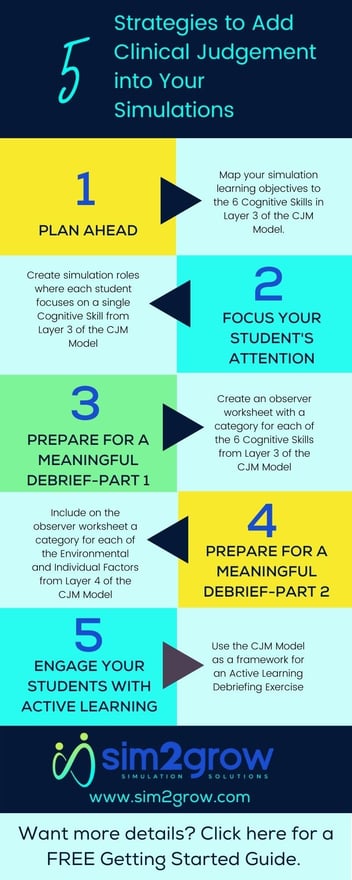Introduction:
As nurse educators and simulation specialists, nursing simulation is a tool that offers our students realistic, hands-on experiences that enhance their clinical skills and decision-making. Educational nursing simulation scenarios became a regular feature in undergraduate nursing curriculums in the early 2000s. Your students practice patient care in a safe, controlled environment using medium to high-fidelity simulation equipment. The long-held hypothesis is that well-designed and effectively run nursing simulation scenarios can bridge the gap between theory and practice, preparing your students for increased success in their clinical practice experiences and real-world practice challenges. Let’s dig into the benefits of simulation in nursing a bit more.
Integrating clinical simulation in nursing education curriculums became crucial due to the increasing shortage and challenges of clinical placements. As a nurse educator, you likely face the difficulty of securing enough clinical placements for your students, a problem made worse by the growing demand for nursing programs and limited healthcare facilities willing to take on students.
Background:
Clinical placements are vital for hands-on experience, but they often involve inconsistencies in learning opportunities, exposure to varied patient cases, and the unpredictability of clinical environments. These can negatively impact the comprehensive development of your students' skills and confidence.
By incorporating simulation in your nursing lab curriculum, you can provide consistent, high-quality training that addresses these gaps. Nursing simulations allow students to engage in various clinical scenarios in a controlled, safe environment, from routine procedures to complex emergencies. This ensures a standardized learning experience for them and allows for immediate feedback and the opportunity to repeat scenarios until competence is achieved.
In addition, nursing simulations can be tailored to replicate specific clinical situations that your students may not encounter during their limited clinical placements, extending their experience and preparedness. Using nursing simulation scenarios limits the impact of the shortage of clinical placements by offering an alternative that is both flexible and effective, ultimately leading to better-prepared nursing graduates ready to meet the demands of the healthcare industry.
This approach reinforces theoretical knowledge and builds confidence and competency in a safe setting. Ultimately, nursing simulation helps bridge the gap between classroom learning and clinical practice, ensuring your students are better equipped to deliver high-quality patient care when they graduate.
How can nursing simulations improve patient care?
Let’s look at a specific example:
Experienced nurses and nurse educators know that SBARR is a critical nursing communication skill because it provides a structured, concise method for communicating important information about a patient's condition. This ensures clarity, reduces misunderstandings, and enhances patient safety. New nurses must master SBARR to effectively communicate vital details to healthcare team members that are essential for patient care and outcomes. But how many of us can say that our students have had even one opportunity to practice this essential skill from beginning to end in the clinical setting? Integrating SBARR into your nursing simulation scenarios gives students valuable practice in critical communication. Here's an example of how this skill can be incorporated into a simulation:
Imagine a scenario where your student cares for a patient experiencing sudden chest pain. The simulation begins with one of your students receiving a handoff report from another student or you acting as a facilitator using SBARR. Your student must then assess the patient, noting vital signs, pain level, and other relevant information.
Situation: The student identifies the patient’s current issue – "Mr. Smith is experiencing sudden chest pain."
Background: The student provides context – "Mr. Smith is a 65-year-old male with a history of hypertension and diabetes. He reported chest pain while resting."
Assessment: The student shares their findings – "His blood pressure is 160/90, heart rate is 110, and he rates his pain as 8 out of 10."
Recommendation: The student recommends, "I recommend administering nitroglycerin as per protocol and preparing for an ECG to further assess his condition."
Response: The instructor or another student acting as a physician responds, providing feedback or additional instructions.
Even a fundamental SBARR nursing simulation scenario like this gives your students practice articulating their observations and recommendations clearly and concisely. A nurse (or nursing student) who communicates successfully via a standardized tool like SBARR promotes better patient outcomes. It’s just not enough to wait (or hope) for the right learning opportunities to present themselves during a clinical rotation. Nursing programs that are proactive and leverage well-thought-out nursing simulation scenarios are setting up future nurses and patients for positive outcomes.
What does the research say about educational nursing simulation?
The NCSBN National Simulation Study found that replacing up to 50% of traditional clinical hours with simulation did not compromise clinical competency, nursing knowledge, or NCLEX pass rates (https://www.ncsbn.org/research/recent-research/simulation-study.page). However, it’s important to note that not all simulations or simulation programs are created equal.
https://www.sim2grow.com/en-us/blog/top-5-reasons-to-use-simulation-in-nursing-education
When incorporating nursing simulation scenarios into your nursing program, consider the following:
- Resources: Ensure appropriate facilities, equipment, and technological support are available.
- Faculty Training: Faculty should be well-trained in simulation techniques and debriefing methods.
- Curriculum Integration: Simulations with clear objectives should be seamlessly integrated into the curriculum.
- Student Preparedness: Orient students to the simulation process and expectations.
- Evaluation Methods: Develop robust methods to evaluate both student performance and the effectiveness of simulations.
- Support: Secure administrative and financial support for sustainable implementation.
These considerations help create an effective and enriching simulation-based learning environment for your nursing students.
What does the research say about patient outcomes when nurses are educated by programs that incorporate simulation in the curriculum?
Research indicates that nurses who are educated through programs that incorporate simulation into the curriculum tend to have better patient outcomes. Simulation-based training enhances clinical skills, critical thinking, and decision-making, allowing graduate nurses to be more prepared and confident in real-world settings. This translates into improved patient safety, more accurate assessments, and better overall care. Studies have shown that simulation helps bridge the gap between theoretical knowledge and practical application, leading to more competent and effective nursing practice.
Here are a few studies referenced in the research on the impact of simulation in nursing education:
- **National Simulation Study (2014)** - Conducted by the National Council of State Boards of Nursing (NCSBN). DOI: [10.1016/S1876-1399(15)30135-5](https://doi.org/10.1016/S1876-1399(15)30135-5).
- **The Longitudinal Study on Simulation-Based Education** - Explores the outcomes of simulation-based learning in nursing practice. DOI: [10.1016/j.ecns.2016.06.002](https://doi.org/10.1016/j.ecns.2016.06.002).
- **Impact of Simulation on Nursing Education and Patient Outcomes** - Examines the correlation between simulation-based education and patient safety. DOI: [10.1097/NNE.0000000000000474](https://doi.org/10.1097/NNE.0000000000000474)
How Can Sim2Grow Help?
The Sim2Grow medication administration simulator can significantly improve patient care outcomes by providing your nursing students with hands-on, realistic training in medication management...both in dispensing dosages from a unit dose cabinet and the bedside administration of the medications using integrated patient and medication barcode scanning. Your students can develop and refine their medication administration skills accurately and safely by practicing in a controlled, simulated environment. This reduces the likelihood of medication errors in real clinical settings. Additionally, the Sim2Grow med. Admin. simulator enhances critical thinking and decision-making abilities, preparing students to handle complex medication administration scenarios confidently. Ultimately, this leads to better-prepared nurses who can deliver higher-quality patient care.



